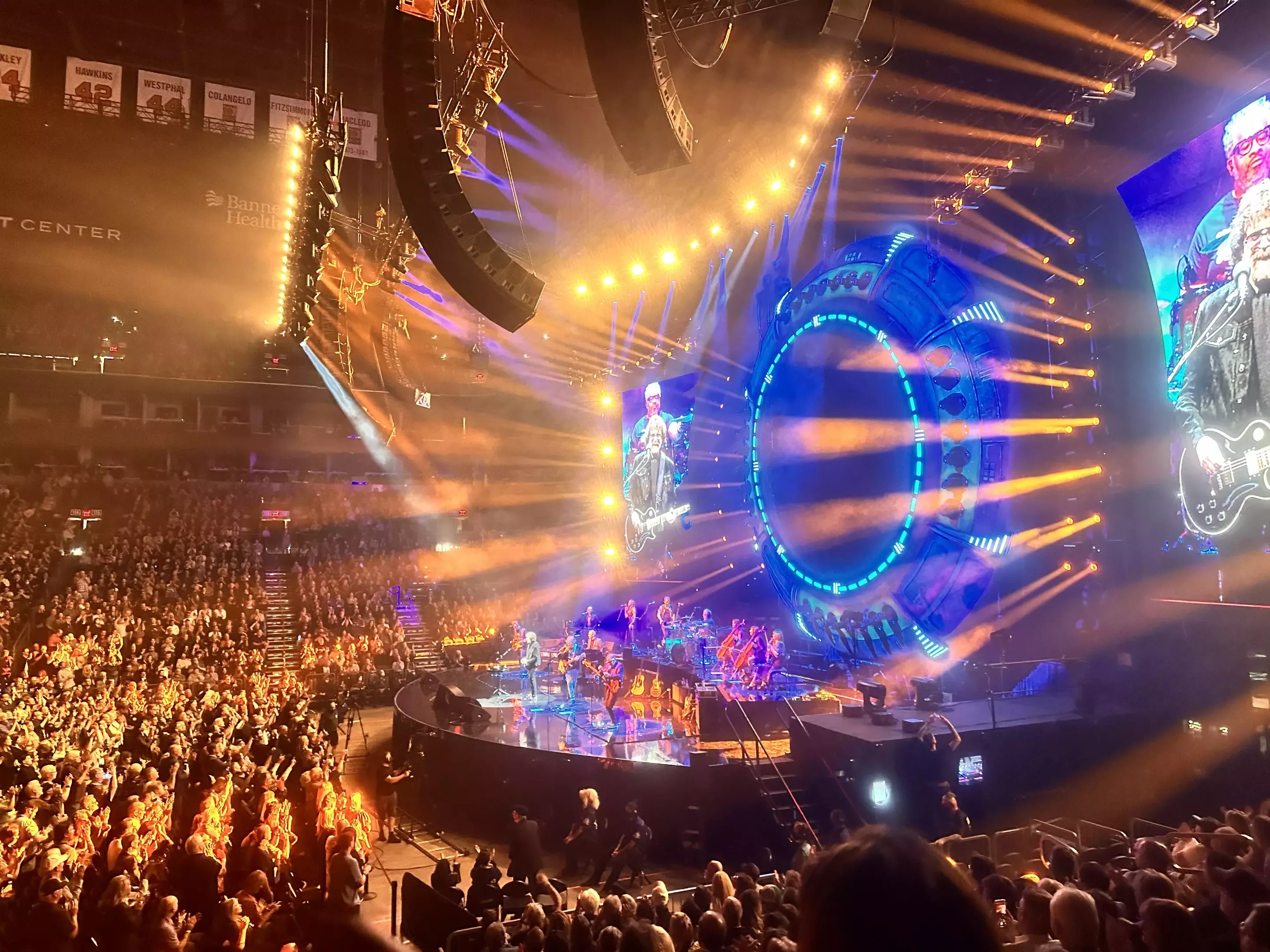
Mr. P-body

Audio By Carbonatix
In 1970, when other bands were simply cranking up the volume, the Electric Light Orchestra, who spun off from English hitmakers The Move, formed with the high-minded concept of merging rock n’ roll with classical music. Despite their pedigree, the band’s first two albums didn’t exactly set the world ablaze.
With “On the Third Day” (subtle title, fellas), which happens to be the third album from ELO, they finally generated a couple of international hits with “Showdown” and Ma-Ma-Ma-Belle.” From there, they rode high throughout the remainder of the decade, creating such classics as “Don’t Bring Me Down”, “Living Thing”, “Evil Woman,” “Telephone Line,” “Turn to Stone” and many others.
I didn’t know any of the history when I purchased the album as a kid in 1981 (as one of 12 for a penny from Columbia House). I just knew I liked the futuristic, mind-blowing vibe of the music.
ELO’s success earned them a spot in the Rock n’ Roll Hall of Fame and landed Jeff Lynne in the late ‘80s supergroup the Traveling Wilburys. And while El Dorado and A New World Record garnered the most critical acclaim in the band’s discography, there is one album that stands out to many fans as their best album, despite the harsh treatment it received from the critics.
Jeff Lynne predicts smartphones (sorta)
This year, make your gift count –
Invest in local news that matters.
Our work is funded by readers like you who make voluntary gifts because they value our work and want to see it continue. Make a contribution today to help us reach our $30,000 goal!
“Sgt. Pepper’s Lonely Hearts Club Band” by The Beatles, who are also the biggest influence on ELO, is often heralded as rock’s first concept album. However, while that album is fantastic, the “concept” behind it is weak, if there even is one.
On Time, almost every song refers to the future, and futuristic, electronic sounds are prevalent throughout. The album’s theme seems to be about someone being whisked from the then-present time of 1981 – the year the record was released – to the dystopian future of 2095.
There’s a song on the album called “Yours Truly, 2025” with the lyrics, “She is the latest in technology/Almost mythology/But she has a heart of stone/She has an IQ of 1001/She has a jumpsuit on/And she’s also a telephone.”
With the advent of AI and the prevalence of smartphones, this song seems uncannily prophetic.
I practically wore out the vinyl in 1981. There’s a line in the song “The Way Life’s Meant to Be” that goes, “As I wander around this wreck of a town/Where people never speak aloud/ With its ivory towers and its plastic flowers/ I wish I was back in 1981.”
That sparked my imagination. I wondered then what it might be like listening to the album as an adult in the future, and here I am — the record still resonates with me.
In another song, “Ticket to the Moon”, Lynne kicks it off by singing, “Remember the good old 1980s/ When things were so uncomplicated/I wish I could go back there again/ And everything could be the same.” Chills.
It’s about time we call “Time” a classic
AllMusic, the prolific music database, gave “Time” a measly two-star rating while the Rolling Stone Album Guide gave it a two-and-a-half. Others panned it, too. I used to think I was the only one who appreciated it.
However, the AllMusic user reviews for “Time” show an extreme amount of enthusiasm for the record. Almost every reviewer mentions the artistic merits of the record and how it’s so commonly overlooked. Also, a close friend of mine revealed how she, too, loves the album and thinks it’s amazing.
The robots, the tickets to the moon, the plastic flowers — it’s all waiting for you. And, honestly, it’s about “time” that “Time” got the love it deserves.